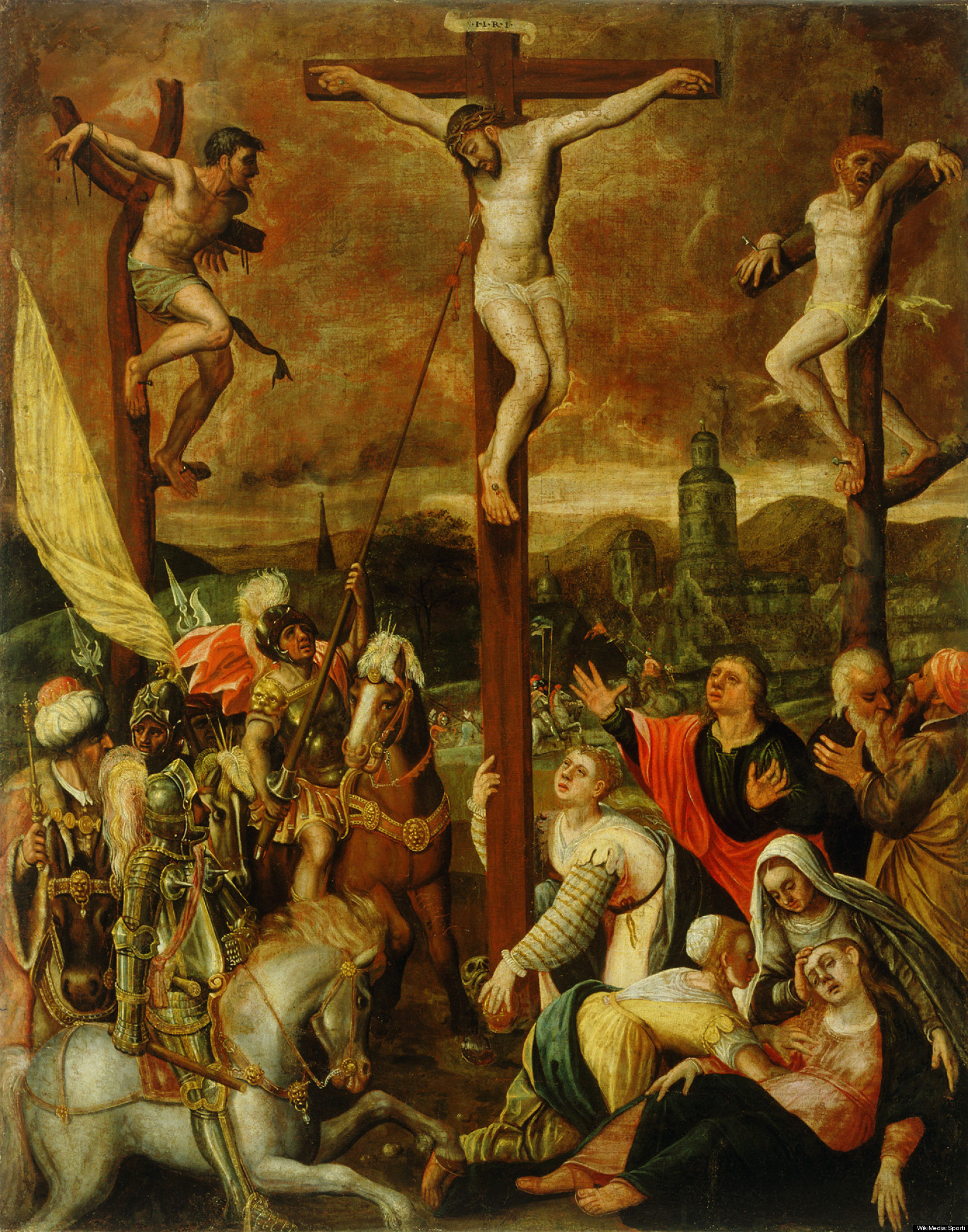The three crosses on the hill of Golgotha carry deep symbolic meaning, but you have to dig down into the beliefs of first century Judaism to discover the full meaning. Brant Pitre’s The Jewish Roots of Holy Week has been brilliant for bringing out some of these details.
First we ask why the cross has been referred to as “the tree”. There are a couple of reasons. A gallows is usually referred to as a “tree”. For example the gallows at Tyburn in London where the English martyrs were hung, drawn and quartered is called “Tyburn Tree.”
This is also a reference to the Old Testament verse which called down a curse on anyone who either hung himself (like Judas) or anyone who was executed.”Cursed is he who hangs upon the tree” (Deut. 21:23)
But there is more to it than that. Pitre asks why, on Monday of Holy Week the gospels record the odd story about Jesus cursing the fig tree. (Mk. 11:12-14 & 20-25) The gospels portray it as a lesson in faith, but there is a deeper meaning which is revealed by learning about Jewish traditions of the time.
We have to get back to the garden. The garden of Eden. Paradise. There were two trees. We think of the Tree of the Knowledge of Good and Evil as an apple tree, but this is a recent tradition linked with the fact that in foundation languages “apple” was a generic word for “fruit”. In ancient Jewish tradition, the Tree of the Knowledge of Good and Evil was the fig tree.
You remember that Adam and Eve made loincloths out of fig leaves. In an ancient non-Biblical Jewish text- The Life of Adam and Eve we learn that they made their skirts from the same tree from which they had eaten.
When Jesus curses the fig tree during Holy Week, therefore, he is giving a sign that echoes more deeply than just a lesson in having faith. When he says, “may no one will ever eat of you again” he is indicating that he will defeat the old curse of the Tree of the Knowledge of Good Evil. He will curse that curse as he curses the fig tree.
Jump forward to the time right after the Last Supper. Why do the disciples go to the Mount of Olives–the Garden of Gethsemane? It was (and still is today) an ancient olive grove. Why is this important? Pitre points out that according to the Jewish traditions, the Tree of Life in the garden was an olive tree. The dove in the Noah story comes after the flood with an olive branch in its beak–a sign of new life and a fresh start.
The other Mass during Holy Thursday is, of course, the Chrism Mass where the bishop blesses the holy oils which bring new life through confirmation, ordination, baptism and healing. And if you didn’t know, the oils used are olive oil.
Therefore two of the trees are significant in Holy Week: the fig which was the Tree of the Knowledge of Good and Evil and the olive–the Tree of Life.
Jesus comes and brings the third tree–the tree of his cross. This tree stands between the fig tree–the Knowledge of Good and Evil and the olive tree-the Tree of Life. Christ’s cross is in between them and he stretches out his hands to grasp evil in one hand and life in the other and reconcile the clash. Evil and Death is destroyed by the third tree and Life and Freedom is established by the third tree.
Finally, when you see the three crosses on Good Friday remember that on either side of Jesus are two men who have to choose. The penitent thief chooses Life and his cross becomes a Tree of Life. The unrepentant thief rejects Christ and chooses the Dark Tree of Evil.
Jesus’ cross stands between them–offering forever the choice for Life or the choice for Death, and to the one who chooses life he says, “Today you will be with me in paradise.”
Death is banished and the gateway the Garden of Eden is opened and paradise is restored.







Leave A Comment
You must be logged in to post a comment.